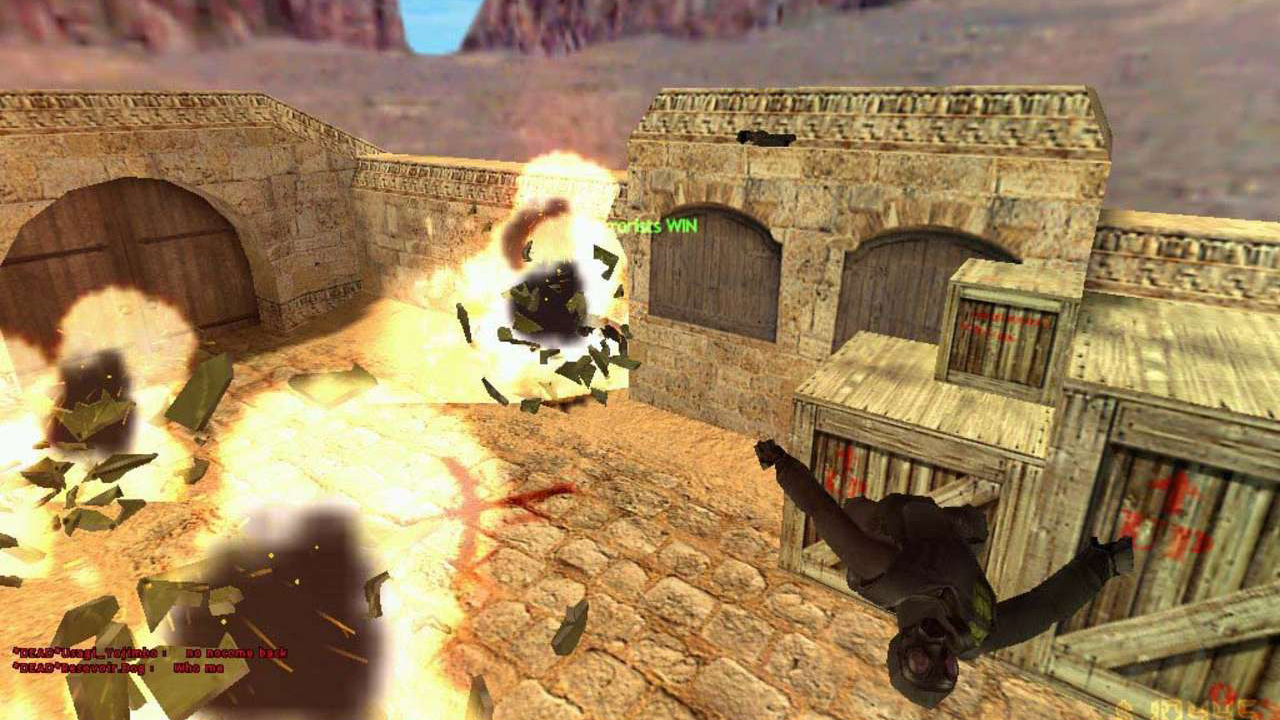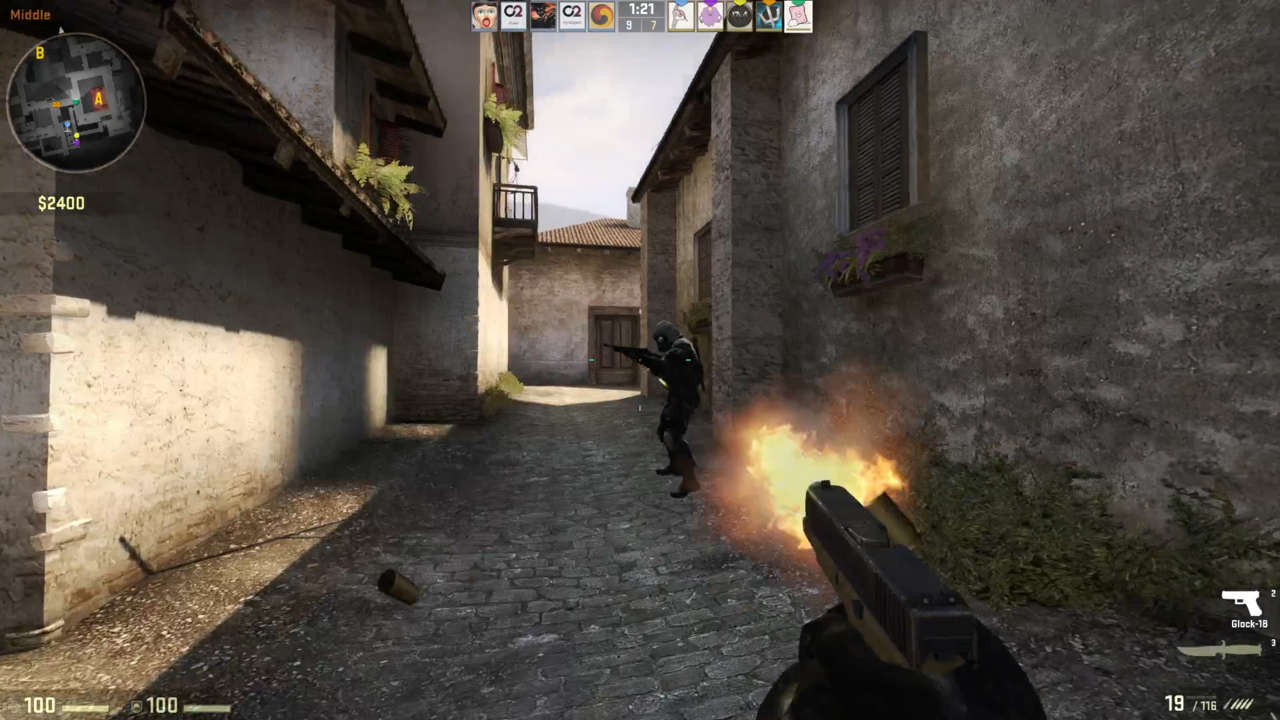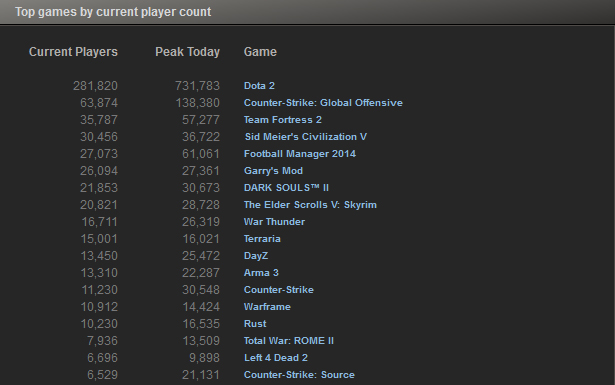The Counter-Strike series may consistently hit the top end on Steam's chart of concurrent users today, but this competitive multiplayer phenomenon began with humble origins. To commemorate the 15 years that have passed since Counter-Strike was first released, I spoke to co-creator Minh "Gooseman" Le for an insight into the creation of the original mod, and its evolution into a standalone game.
At its core, Counter-Strike focuses on an ongoing multiplayer battle between two teams; the terrorists and the counter-terrorists. Both teams have objectives that need to be met in order to win a round and gain a point, which contributes to the larger goal of gaining enough points to secure overall victory.

For Le, the decision to create a game centered on the conflict between terrorist and counter-terrorist squads spawned from a personal interest in the subject. "There weren't a whole lot of games out there that dealt with that theme," Le said, although he did cite Rainbow Six as a sole example. "I thought it was kind of like a mysterious topic that hadn't been covered as well."

Such a theme required a more realistic setting for the game he envisioned, which was the main reason why Le chose to mod Half-Life. At the time, Unreal Tournament and Quake were also available, but lacked the inherent realism he sought to achieve and would have required more work. Despite the learning curve Half-Life's then-new engine presented, Le was passionate about making the game, working "about 30 or 40" hours per week on the project while studying at university.
"I was really just hoping we would find a small player base to grow from--nothing too substantial," he said. When the mod first launched, the reaction from the community shocked Le, who was taken aback by the amount of popularity it quickly gained.
Feedback from the community was facilitated by Jess Cliffe, who ran the website where player discussion was held. Communication with fans was paramount to the development of the subsequent versions of Counter-Strike, with Le making alterations to the game according to feedback he received.

Le described the process as an "open development" operation, due to the level of involvement the community had.
"We didn't actually make any of the levels for Counter-Strike, all of the levels were made by the community. They would make levels and submit them to us, and we would review them. We would choose which ones we liked and include those in the next version we released. So basically that is how the game was developed. It was me, my partner Cliffe, and the community. It was kind of like crowd development." Le said.
His goal to create a shooter steeped in realism paid off, with Valve taking interest and acquiring the rights to re-release the game for PC in 2000. In a time when first-person shooters such as Unreal Tournament and Quake were popular, Counter-Strike stood out for its slower-paced combat and emphasis on teamwork. The success of the game impacted how the genre evolved over the next few years.

"We started to see more games that emulated that style of gameplay," Le said. "They focused on realistic, slower paced fighting. After Counter-Strike became a hit, we saw games like Call of Duty and Medal of Honor. Games that were steeped in realism started to become more popular."
It was Counter-Strikes stronger emphasis on realism and straightforward mechanics which Le believes helped to make the game more attractive for competitive play.
"I think there will always be a place for CS, because people appreciate that skill-based gameplay. They really want the game to focus more on what their skills are."
"Counter-Strike is more something for the esports scene, and that's why it's distinctly different to Call of Duty and Battlefield 4. I think there will always be a place for CS, because people appreciate that skill-based gameplay. They really want the game to focus more on what their skills are."
Le went on to join Valve and worked on developing Counter-Strike: Source, a remake of the first game powered by Half-Life 2's Source engine. While the game retains a high number of concurrent players on Steam today, initial reactions from the community were divided. The backlash was surprising to Valve, whom Le described as having expected "everyone to jump over from the older version". To him, the differences between the games felt "very subtle".

For example, a number of Counter-Strike maps have remained fundamentally unchanged throughout the different versions of the game.
"But a lot of the hardcore players, they feel that it's a night and day difference." He said. Le described the issue as a point of frustration for Valve, who subsequently approached development of the follow-up game, Counter-Strike: Global Offensive, in a different light.
"I think Valve got to the point where they were like, 'Yeah, it's impossible to please everybody'." Le said. "So they just focused on making CS: GO as good as a product as they can for whoever chooses to play it."
Counter-Strike: Global Offensive went on to be released in 2012, 13 years after the launch of the original mod. The suitability of the game for competitive play has contributed to its longevity in the esports scene, with it featured most recently in this year's Electronic Sports League (ESL) Intel Extreme Masters Grand Finals held in Katowice. The event saw the best Counter-Strike teams in the world compete for a $250,000 prize pool as a record number of viewers spectated.
Le did not foresee that the series would possess such a long life. "Even five years ago I thought it was going to die out," he admitted. "It's just amazing how much longevity it's shown. But I think all of it is attributed to Valve's involvement in the franchise."

Although many of the fundamentals of the Counter-Strike games throughout the years, the landscape of the genre has evolved significantly since the game was first released. In comparison to the Call of Duty and Battlefield games, Le dubs Counter-Strike "a simple game".
Speaking about the future of the genre, Le expressed a desire for change in player movement. To him, introducing dynamic movement seemed the most appropriate way for shooters to evolve.

"Titanfall for example, it pushes the boundaries in how the player can move and by doing that it allows more diversity in gameplay. I think that's something we'll see more in future games." Le said. Such mechanics have already been explored in the likes of other games such as Warface and Brink.
Fifteen years after the first version of the mod was released, the Counter-Strike series has sold over 25 million copies, spawned several different successful iterations, and established itself as a core title in competitive gaming. While the first-person shooter genre has shifted dramatically away from what it was 15 years ago, Counter-Strike still retains a strong user base--a testament to the timeless relevance of the game.





